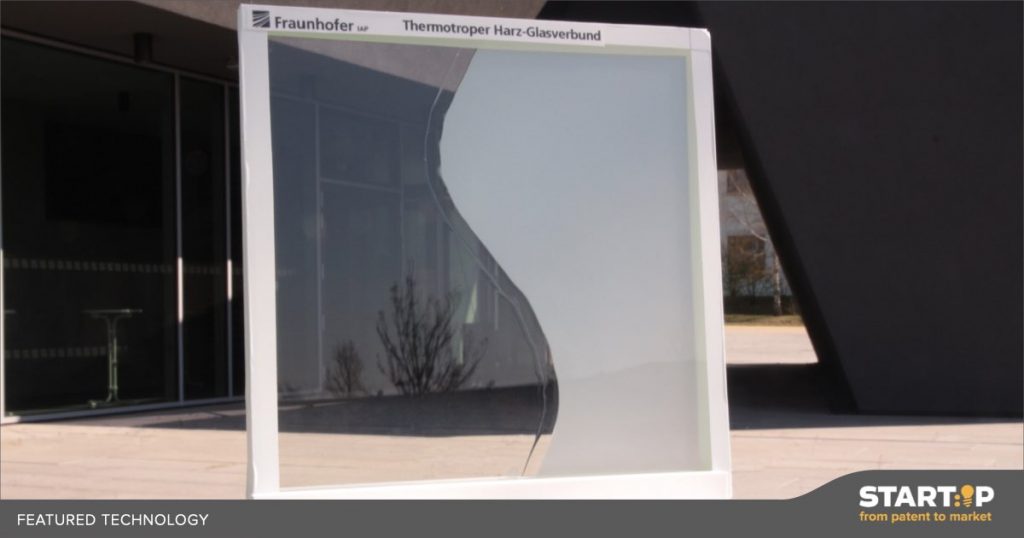Imagine a window that would shade itself when sunny, no curtains or blinds required. That’s what this technology can do – a laminate film for glass that becomes cloudy when it’s warm. And when it’s cooler again? It lets the sunshine in.
START:IP
Technologie Kurzbeschreibung (nur Englisch)
Temperature-sensitive Optical Film for Glass
Film Turns Glass from Clear to Cloudy with Temperature Change
Bookmark4
This group of scientists have developed a plastic film for glass that changes in response to temperature, to become cloudy or turbid when warm. The product is based on existing glass laminates, but with an extra additive that enables these amazing changing properties. In addition to shading from the sunlight, the additive enables the laminate to better reflect heat away, keeping inside cool on a hot day. What’s more, using laser cutting, patterns and designs can be made in the film that will magically appear when the glass is warm. Alternatively, the film can be used for greenhouses, to help protect the plants from too much sun.
Previously existing laminate films are already approved in the building industry, meaning that this product is ready to hit the market. Not interested in glass? The additive can be added to almost any clear material to have the same effect! The scientists are also developing other plastics that change colour in response to temperature, or to other stimuli such as electricity or physical pressure. If you have an idea for an application, get in touch!
Previously existing laminate films are already approved in the building industry, meaning that this product is ready to hit the market. Not interested in glass? The additive can be added to almost any clear material to have the same effect! The scientists are also developing other plastics that change colour in response to temperature, or to other stimuli such as electricity or physical pressure. If you have an idea for an application, get in touch!
If you click the button and fill out the form to be „matched“ with a technology, we will introduce you to the scientist / transfer manager of the respective research institution. In this way, you immediately have the chance to receive more detailed information and to start discussions about a possible joint project.

